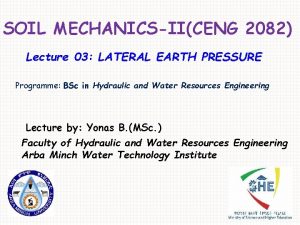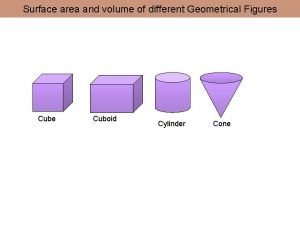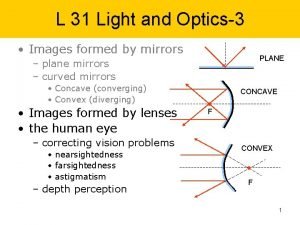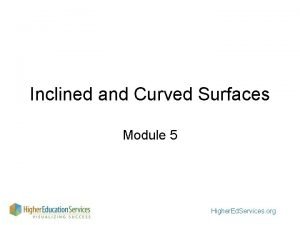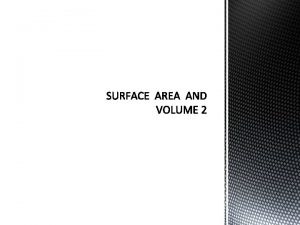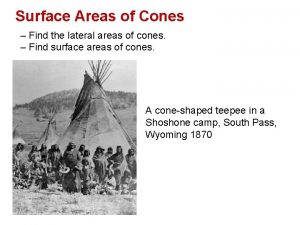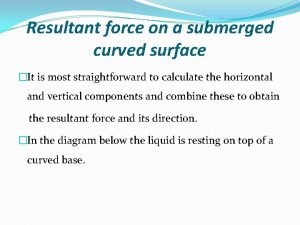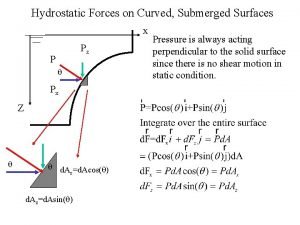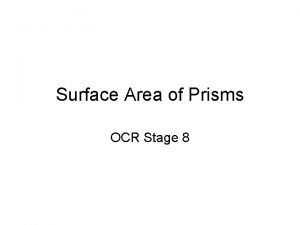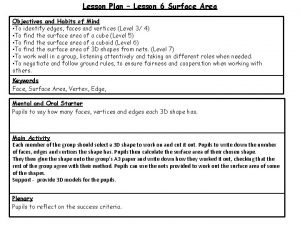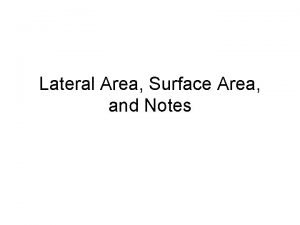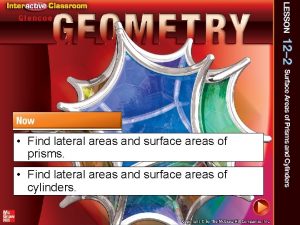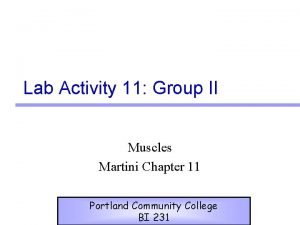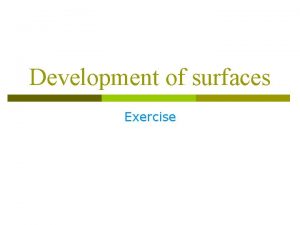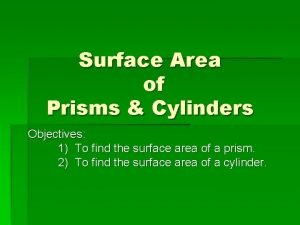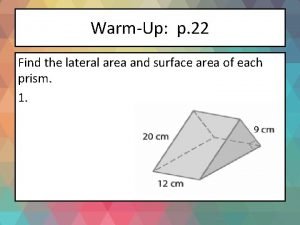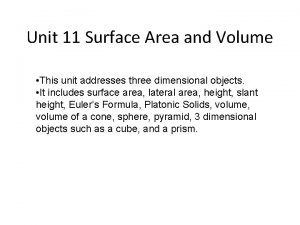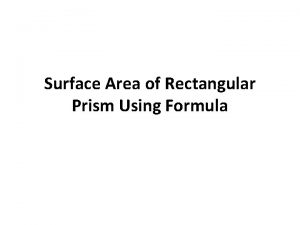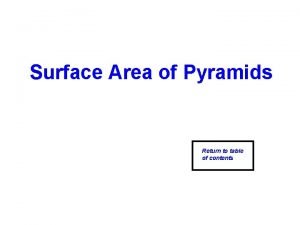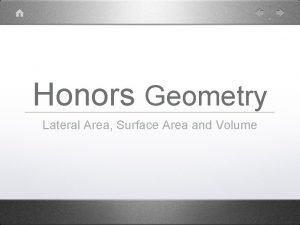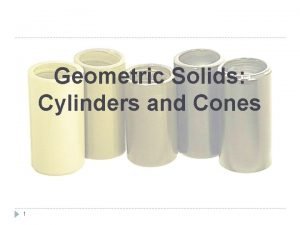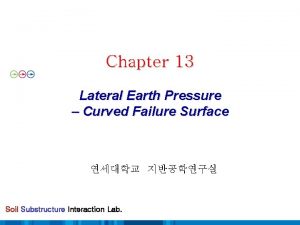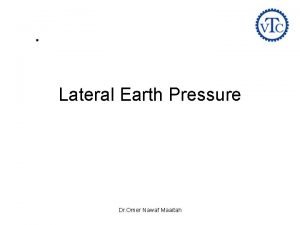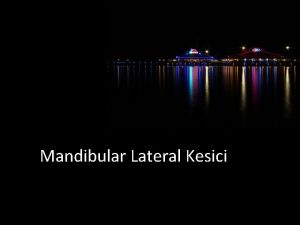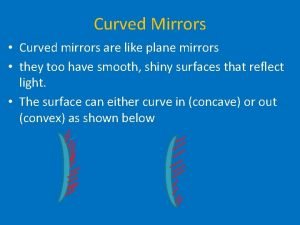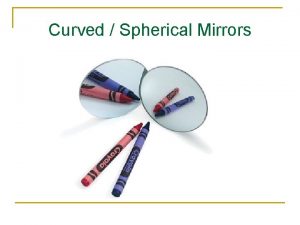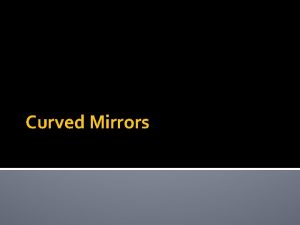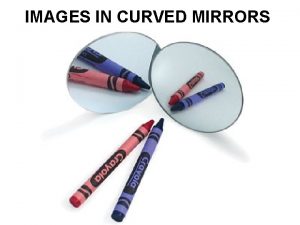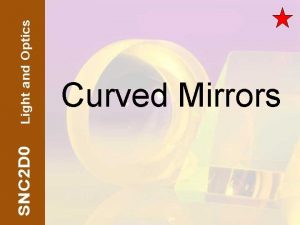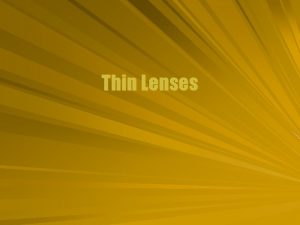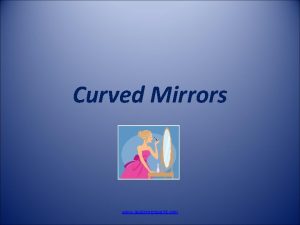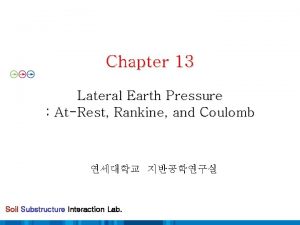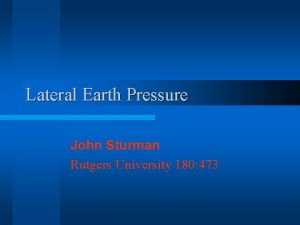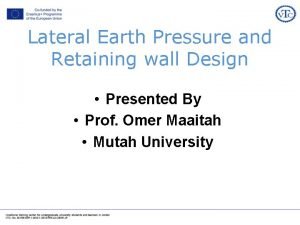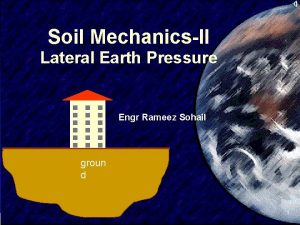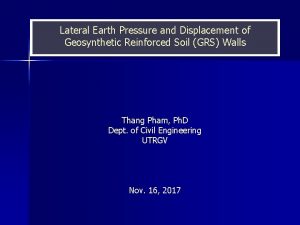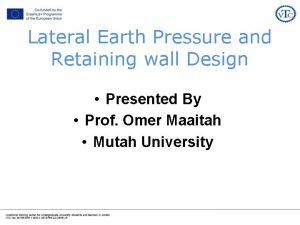Chapter 14 Lateral Earth Pressure Curved Failure Surface






























- Slides: 30

Chapter 14 Lateral Earth Pressure – Curved Failure Surface 연세대학교 지반공학연구실 Soil Substructure Interaction Lab.

14. 1 Retaining Walls with Friction Soil Substructure Interaction Lab.

14. 1 Retaining Walls with Friction downward motion of the soil relative to the wall Soil Substructure Interaction Lab.

14. 1 Retaining Walls with Friction downward motion of the wall relative to the soil Substructure Interaction Lab.

upward motion of the soil relative to the wall Soil Substructure Interaction Lab.

14. 1 Retaining Walls with Friction upward motion of the wall relative to the soil Substructure Interaction Lab.

14. 2 Properties of a Logarithmic Spiral logarithmic spiral의 성질 Location of centroid Soil Substructure Interaction Lab.

14. 3 Procedure for Determination of Passive Earth Pressure, Pp (Cohesionless Backfill ) - procedure of evaluating the passive resistance by trial wedges (Terzaghi & Peck. 1967) Soil Substructure Interaction Lab.

14. 3 Procedure for Determination of Passive Earth Pressure, Pp (Cohesionless Backfill ) Soil Substructure Interaction Lab.

14. 3 Procedure for Determination of Passive Earth Pressure, Pp (Cohesionless Backfill ) Soil Substructure Interaction Lab.

14. 3 Procedure for Determination of Passive Earth Pressure, Pp (Cohesionless Backfill ) - procedure of evaluating the passive resistance by trial wedges (Terzaghi & Peck. 1967) Steps 1. Draw retaining wall to a convenient scale 2. Draw line C 1 A (45 - /2) degrees with the surface of the backfill 3. Consider the stability of the soil mass ABC 1 C 1 for equilibrium) Rankine’s passive force F 1 = resultant of the shear and normal forces P 1 = passive force per unit length of the wall Soil Substructure Interaction Lab.

14. 3 Procedure for Determination of Passive Earth Pressure, Pp (Cohesionless Backfill ) 4. + 5. Trial passive force per unit length of the wall is repeated for several trial wedges 6. P 1 (trial wedge 1) P 2 (trial wedge 2) Plotted to a same scale P 3 (trial wedge n) • Find the low point of the smooth curve • That is actual passive force, Pp Soil Substructure Interaction Lab.

14. 4 Coeffi. of Passive Earth Pressure (Kp) - Proposed the curved failure surface like as arc. of a logarithmic spiral (Terzaghi & Peck, 1967 : Janbu, 1957) arc. of an ellipse (Caquot & Kerisel, 1948) ; Fig. 14. 4 , Table 14. 1 참조 arc. of a circle (Packshaw, 1969) Passive Presure by the Method of Slices by Shields and Tolunay (1973) Table 14. 2 참조 Example 14. 1 Soil Substructure Interaction Lab.

14. 5 Passive Force on Walls with Earthquake Forces H Arc of a log spiral Logarithmic spiral failure surface for determination of Ppe Soil Substructure Interaction Lab.

14. 5 Passive Force on Walls with Earthquake Forces The passive force, Figure 14. 6 shows variation of with and for Mononobe-Okabe solution and for the logarithmic spiral Type of failure surface analysis. Soil Substructure Interaction Lab.

14. 5 Passive Force on Walls with Earthquake Forces Soil Substructure Interaction Lab.

14. 5 Passive Force on Walls with Earthquake Forces As we can see from the figure, for a given value of the magnitude of , is always larger when the failure surface is assumed to be plane (Mononobe-Okabe solution) Soil Substructure Interaction Lab.

14. 6 Braced Cuts (버팀 굴착) - Two Types of Braced Cuts Soldier beam, wood lagging, wale, strut Sheetpile, wale, strut Soil Substructure Interaction Lab.


14. 7 Determination of Active Thrust on Bracing Systems of Open Cuts in Granular soil - Active thrust on the bracing system of open cuts : Terzaghi’s general wedge theory (1941) General Procedures 1. A point b 1 is selected. 2. From b 1, a line b 1 b 1 that makes an angle of with the ground surface is drawn. 3. The arc. of the logarithmic spiral, b 1 B is drawn with the center of the spiral (pt. O 1) 4. Consider the stability of the soil mass ABb 1 for equilibrium. W 1 = · area(ABb 1)·(1) P 1 = the active trust acting at a point na·H F 1 = the resultant of the shear and normal forces acting along with the trial failure surface. Soil Substructure Interaction Lab.

14. 7 Determination of Active Thrust on Bracing Systems of Open Cuts in Granular soil + 6. Trial active thrust is repeated for several trial wedges P 1 (trial wedge 1) P 2 (trial wedge 2) Plotted to a same scale Pn (trial wedge n) Find the maximum point of the smooth curve That is actual active force, Pa Soil Substructure Interaction Lab.

14. 7 Determination of Active Thrust on Bracing Systems of Open Cuts in Granular soil Substructure Interaction Lab.

14. 7 Determination of Active Thrust on Bracing Systems of Open Cuts in Granular soil Substructure Interaction Lab.

14. 8 Determination of Active Thrust on Bracing Systems for Cuts in Cohesive Soil - Undrained condition, =0 The equation of the logarithmic spiral (circle) 1. Consider force for equilibrium of the wedge ABb 1 W 1 = · area(ABb 1)·(1) P 1 = the active trust acting at a height of na·H F 1 = the resultant acting along the surface of sliding cur 1 1 = force from cohesion acting along the surface of sliding ca. H = force from adhesion between the soil and the sheeting Soil Substructure Interaction Lab.

14. 8 Determination of Active Thrust on Bracing Systems for Cuts in Cohesive Soil 2. + 3. Trial active thrusts is obtained from several trial wedges P 1 (trial wedge 1) P 2 (trial wedge 2) Pn (trial wedge n) Plotted to a same scale the highest point of the smooth curve That is actual active thrust, Pa Soil Substructure Interaction Lab.

14. 8 Determination of Active Thrust on Bracing Systems for Cuts in Cohesive Soil Substructure Interaction Lab.

14. 8 Determination of Active Thrust on Bracing Systems for Cuts in Cohesive Soil H Determination of active force on bracing system of open cut in cohesive soil( =0) Soil Substructure Interaction Lab.

14. 9 Pressure Variation for Design of Sheetings, Struts, and Wales - Calculation using general wedge theory does not explain the veriation of the earth PR with depth - Empirical lateral PR. diagrams (Peck, 1969) Soil Substructure Interaction Lab.

14. 9 Pressure Variation for Design of Sheetings, Struts, and Wales - Limitation for Pressure Envelopes 1. PR. envelopes : apparent PR. envelopes 2. applied depth 20 ( 6 m) 3. W. T. : below the bottom of the cut 4. Sand : assumed to be drained 5. Clay : assumed to be undrained and pwp is not considered Strut load determination - Soldier piles are assumed to be hinged at the strut level, except for the top & bottom ones - Strut loads Soil Substructure Interaction Lab.

14. 9 Pressure Variation for Design of Sheetings, Struts, and Wales Soil Substructure Interaction Lab.
 Surface area of a cone
Surface area of a cone Lateral surface area for a triangular prism
Lateral surface area for a triangular prism Types of lateral earth pressure
Types of lateral earth pressure Rankine active earth pressure formula
Rankine active earth pressure formula Site:slidetodoc.com
Site:slidetodoc.com Failure to capture vs failure to sense ecg
Failure to capture vs failure to sense ecg Supparerk vision center
Supparerk vision center Ductile vs brittle fracture
Ductile vs brittle fracture Perimeter of a cone
Perimeter of a cone Volume of geometrical figures
Volume of geometrical figures Refraction at spherical surface
Refraction at spherical surface What is a curved surface
What is a curved surface 12 edges of cube
12 edges of cube Solid volume calculator
Solid volume calculator Lateral area of circle
Lateral area of circle Vertical force on curved surface
Vertical force on curved surface Hydrostatic force on submerged surfaces
Hydrostatic force on submerged surfaces Trapezoidal volume formula
Trapezoidal volume formula Surface area of a triangular prism
Surface area of a triangular prism Surfce area
Surfce area Find the lateral area of the regular octagonal prism
Find the lateral area of the regular octagonal prism Spine t8 t9
Spine t8 t9 Abductor hallucis
Abductor hallucis Parallel line development
Parallel line development Lateral surface area of a hexagonal prism
Lateral surface area of a hexagonal prism Lateral edge
Lateral edge What is lateral area
What is lateral area Total surface area of a rectangular prism
Total surface area of a rectangular prism Slant height of a pyramid
Slant height of a pyramid Lateral area vs surface area
Lateral area vs surface area Solids: cylinders
Solids: cylinders


